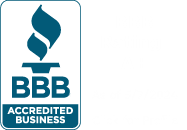
For travelers who need oxygen therapy, flying can seem daunting. The logistics, restrictions, and uncertainty raise a key question: Are portable oxygen concentrators allowed on airplanes? Fortunately, the answer is yes—but there are important details to know.
At LPT Medical, we believe staying mobile shouldn’t mean sacrificing your health or freedom. Whether you’re flying across the country to visit family or planning a dream vacation, we’re here to guide you through everything you need to know about bringing a portable oxygen concentrator (POC) on an airplane. From TSA policies to FAA regulations, we have you covered.
Understanding the Basics: Are Portable Oxygen Concentrators Allowed on Airplanes?
Yes, portable oxygen concentrators are allowed on airplanes—but only if they are FAA-approved models. The Federal Aviation Administration (FAA) has specific requirements for medical devices, particularly those that deliver oxygen. Unlike oxygen tanks or liquid oxygen—which are prohibited for safety reasons—FAA-approved POCs are considered safe for in-flight use.
However, having an approved device doesn’t mean you can simply walk through security and board without preparation. Most airlines require advance notice, medical documentation, and proof of sufficient battery capacity before you can use your portable oxygen concentrator during a flight.
Step-by-Step: How to Fly with a Portable Oxygen Concentrator
Here’s a step-by-step guide to help you get ready for air travel with a portable oxygen concentrator (POC).
Confirm FAA Approval
First, check if your portable oxygen concentrator is on the FAA-approved list. Most modern devices from reliable suppliers like LPT Medical meet these standards. Some examples include:
- ARYA Mini
- ARYA Airtivo Max
- Inogen One G5 / Inogen Rove 6
- Caire FreeStyle Comfort
To confirm, look for a label on your device that says: "RTCA/DO-160 Section 21 Category M Compliant" or has FAA approval wording.
If you’re not sure, reach out to our team at LPT Medical, and we will check your unit’s status for you.
Most airlines require passengers to notify them at least 48 hours before departure if they intend to use a portable oxygen concentrator onboard. Policies vary, but airlines typically need the following information:
- The make and model of your POC
- Whether you will use it during the flight
- Your battery life and capacity
- That your device is FAA-approved
You might also need to fill out a Medical Certificate or Passenger Medical Clearance Form. It’s a good idea to check the airline’s official website or contact customer service to confirm their requirements.
Get a Doctor’s Note or Medical Statement
Many airlines require a signed statement from your doctor confirming:
- You are fit to fly
- You require oxygen therapy
- The flow rate and setting of your oxygen
- That you can operate your POC independently or with a companion
Keep this document with you—TSA agents or gate personnel may request it before boarding.
Meet Battery Requirements
This is a critical part of air travel with a portable oxygen concentrator. Airlines do not permit you to plug in your POC during the flight, so you must bring enough battery power to cover at least 150% of your total flight time, including layovers and potential delays.
- For example, if your flight is 4 hours long, you need at least 6 hours of battery life.
- It’s a good idea to carry extra batteries, especially for international or long-haul flights.
At LPT Medical, we provide extended batteries and battery chargers for most models to help you meet airline requirements.
Arrive Early and Prepare for TSA Screening
Portable oxygen concentrators are allowed through TSA checkpoints, but they will be screened separately from your carry-on items. Be ready to:
- Remove the POC from its carrying case
- Power it on briefly, if requested
- Have your medical documentation accessible
TSA officers are trained to handle medical equipment with care, but arriving 30–45 minutes early gives you extra time in case your device needs additional screening.
In-Flight Guidelines: Using Your POC on the Plane
Once onboard, here are a few tips for a smooth experience:
- Keep your POC under the seat in front of you. Bulkhead seating is not always ideal unless the airline accommodates your device nearby.
- Use your POC continuously, as prescribed. Cabin air is dry and can impact oxygen levels, so it’s important not to skip usage.
- Don't block aisles or emergency exits. Your unit must stay within your personal space.
- Notify flight attendants that you’re using a medical device; this ensures they can assist you if needed.
Most POCs operate quietly, so you likely won’t disturb other passengers.
Airline-Specific Policies: A Quick Snapshot
Each airline has its own policies regarding portable oxygen concentrators. The answer is yes—they are allowed—but requirements and procedures differ. Here’s a brief overview of major carriers:
|
Airline |
POC Allowed? |
Notice Required |
Battery Rule |
|
American |
Yes |
48 hours |
150% of flight time |
|
Delta |
Yes |
48 hours |
150% of flight time |
|
United |
Yes |
48 hours |
150% + battery approval |
|
Southwest |
Yes |
No formal notice |
Bring enough battery |
|
Alaska |
Yes |
48 hours |
Bring enough battery |
|
JetBlue |
Yes |
48 hours |
150% of flight time |
Always double-check the airline’s medical assistance page before flying.
International Travel Considerations
Are portable oxygen concentrators allowed on international flights? Yes, but traveling abroad requires extra preparation. Some international carriers have different battery policies or require your medical forms to be translated.
- Some international carriers have different battery policies or require translation of your medical forms.
- Not all countries permit POC use in the terminal, even if it is allowed onboard the aircraft.
- Bring international power adapters if you plan to recharge abroad.
- Consider travel insurance that covers your medical equipment.
Why POCs Are Preferred Over Oxygen Tanks for Air Travel
If you’re still using oxygen tanks, consider switching to a portable oxygen concentrator for travel. Here’s why they’re ideal for flying:
- TSA and FAA compliant
- No hazardous materials—safe under pressure changes
- Lightweight and compact—easier to store
- Rechargeable—no need for refills
- Quiet operation—passenger-friendly
At LPT Medical, we carry a full range of FAA-approved portable oxygen concentrators designed specifically with travel in mind. Whether you need pulse dose or continuous flow, we can match you with the right unit for your lifestyle.
If you’re still using oxygen tanks, think about switching to a portable oxygen concentrator for travel. Here’s why they work well for flying:
- TSA and FAA compliant
- No hazardous materials, safe under pressure changes
- Lightweight and compact, easier to store
- Rechargeable, no need for refills
- Quiet operation, passenger-friendly
At LPT Medical, we offer a wide range of FAA-approved portable oxygen concentrators designed specifically for travel. Whether you need pulse dose or continuous flow, we can help you find the right unit for your lifestyle.
Quick Checklist: Flying with a Portable Oxygen Concentrator
Is your device FAA-approved?
Have you notified your airline?
Do you have a doctor’s note?
Did you pack 150% battery time?
Are your accessories (tubing, cannulas, etc.) packed?
Do you have power adapters for your destination?
Are you familiar with airline rules and TSA screening?


.png)




